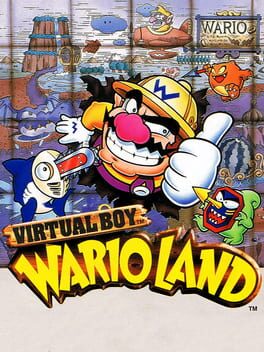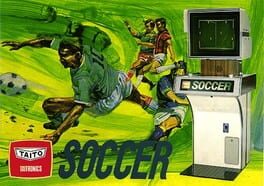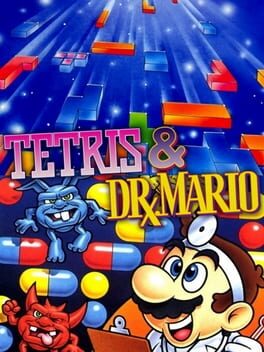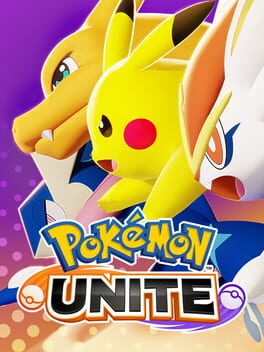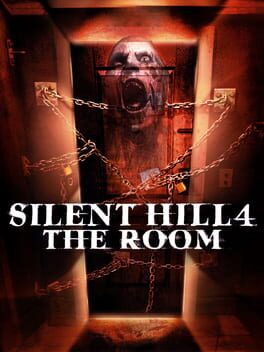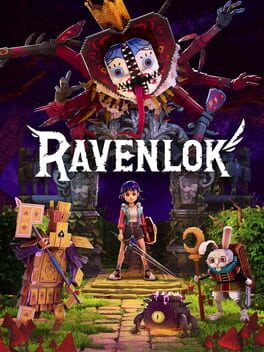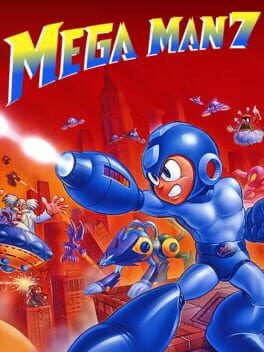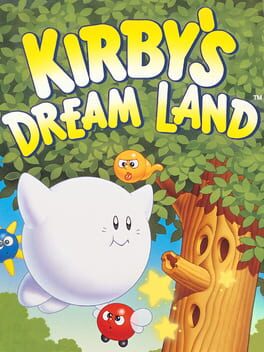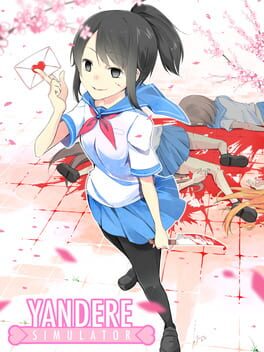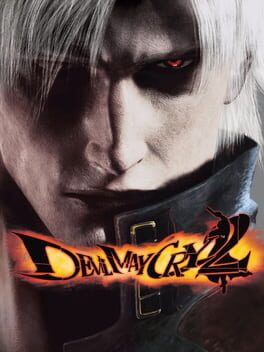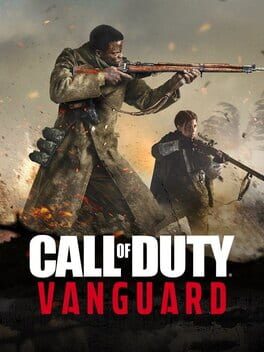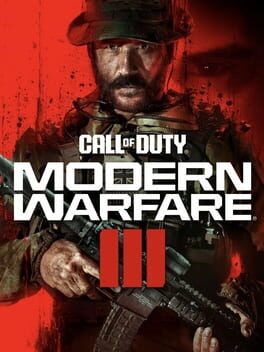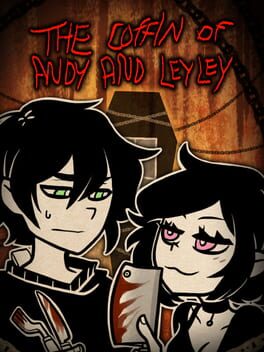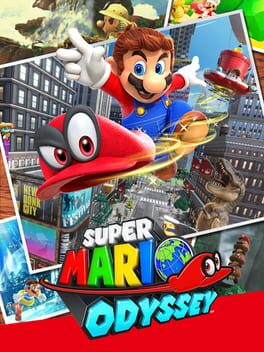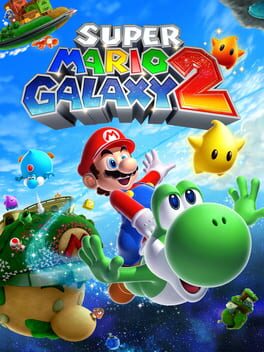47 reviews liked by Kurffy
Any Nintendo fan, if you were to bring up the topic, would most likely talk your ear off about how great or bad Nintendo’s lineup of consoles has been from the NES all the way up to now, with the possibility that you may even get some people who will go out of their way to defend some of their more apparent blunders like the Wii U (it’s me, I’m one of those people). However, if there is one universal fact that most fans of Nintendo can agree on is that, out of all their consoles, the Virtual Boy was the absolute worst one of the bunch. For those that somehow don’t know, this was the placeholder console that was released in-between the SNES and the N64 around the mid-90s, and as you could probably tell by the name, this was meant to be a… ahem, REVOLUTIONARY system! It was gonna implement 3D and VR technology into console games, bringing capabilities that consoles like the SNES and Genesis could only DREAM of pulling off……………. or at least, it was, if it didn’t immediately crash and burn right out the starting gate.
Most of the games that were released for the thing barely took advantage of these capabilities whatsoever, which makes one question why you would even play these games in the first place, and given the fact that every single one of these games could only be played with this garbage red and black color scheme that would do a real number on your eyes, it becomes all too clear as to why this thing only lasted a year before being thrown away by Nintendo themselves. But hey, I will give the system credit, as not everything that it did was completely awful. For one thing, it gave everybody a clear idea on not how to make a video game system, and we did end up getting one or two decent games from the machine, such as with what I would consider the best game ever to be released on the platform, Virtual Boy Wario Land.
It only made sense that we were gonna be seeing more Wario Land games soon after the original game, considering how successful it was, but I never would’ve guessed that the next game in the series would be made exclusively for the Virtual Boy. Granted, that doesn’t make me wanna play it any less, but it definitely makes it hard to recommend to anyone given that fact alone, hence why I never played the game for the longest time until earlier this year when I decided to check it out. It wasn’t that hard for me to get into it, but HOO BOY, you think that staring at the red and black graphics were bad, then you should try what I did, and stare at a bunch of purple, blue, and red graphics that clash horribly with each other for hours at a time, so that was a lot of fun to go through. But anyway, obvious flaws aside, I actually ended up having a lot of fun with the game, and I would say it is really good. I wouldn’t say it is better then the original Wario Land, nor anywhere near as good as future games in the series, but it still manages to be a pretty solid platformer, and definitely the best game that was ever released on the Virtual Boy.
The story is pretty basic for a Mario spin-off like this, where while Wario is chilling inside of a cave in the Awazon region (yes, you read that correctly), he is disturbed by a gang of evil baddies who go on and take all of the treasure of the land for themselves, with Wario giving chase towards them, only to end up getting thrown down through the floor, so it is up to him to fight his way back up, get many treasures along the way, and maybe take down some bad guys as well. Again, pretty standard stuff going on here, but it is still charming and simple enough to where you can easily get invested in Wario’s plight, because not only can most of us relate to wanting to get millions of dollars through any means necessary, but you do wanna see him beat the fuck out of these creatures as well.
The graphics are… well, take a wild guess how they are, but even if we ignore the obvious elephant in the room, we got some really great sprite work going on here, with all the different levels, characters, enemies and so on looking pretty damn great, which makes the game that little more appealing to look at, the music is really good, having plenty of great tracks to hear in there such as this one, but I dunno, something about it doesn’t quite come close to what we had in the original game for me, and the gameplay/control is pretty standard for a Wario game, having everything that you would expect, with a few more bells and whistles attached as well, making for a pretty entertaining time all throughout.
The game is a 2D action platformer, where you take control of Wario once again, go through a set of fourteen different levels that’ll lead you all the way up through this tower, defeat plenty of enemies using your natural brute strength or whatever tools you have at your disposal, gather several different powerups, rare treasures, and LOTS of coins throughout your journey to get as rich as ever and for extra bonuses, and take on several bosses that can actually prove to be quite a challenge, not just because some of their gimmicks can take some time to getting used to, but you will also need to fight to see whatever is happening because of the goddamn screen. Once again, we have all heard this song and dance before, usually without any graphical nonsense holding it back, but it manages to make up for it in plenty of different ways, such as its overall tight design, its infectious energy, and having plenty of genuinely fun platforming challenges to see throughout.
If you had played the original Wario Land, then you pretty much know almost everything to expect out of this game: you run around, you bash these tiny fuckers around to take their money, you find MANY riches hiding around every corner, and you even find plenty of secret treasures along the way, which can change up the type of ending you get. That is pretty cool and all, with all of these elements blending together in beautiful, red-painted harmony, being very fun to play through, exploring around to get all of the treasures, solving the puzzles, finding these different hats that can help you out, even to the point of completely cheesing levels at some points, and even playing the minigames for the chance of getting more coins and extra lives. Most of it sticks pretty closely to the original game, but there is one thing that definitely does set it apart from that other game: the 3D aspect.
Given how this game was released on Virtual Boy, it definitely needed some sort of 3D or “VR” gimmick to make it stand out, and the way that this game does this is by introducing backgrounds, which you can jump to and from whenever you please using these arrow pads that you will find throughout many of the levels. It’s a very simple idea by today’s standards, but it is fun to explore both parts of each level to see what each might be hiding, encouraging even more exploration to see how you can go to and from that background, along with finding all of those hidden goodies. Not only that, but the game does also make sure to challenge you with this gimmick as well, with there being plenty of obstacles that can either sway to and from the background, or even send you to and from it as well whenever you aren’t quick on your feet. Hell, there are even plenty of enemies and bosses that take full advantage of this, leading you to pay close attention to who is gonna do what next, and what you should do from there, making for some somewhat tricky, yet still fun enemy encounters.
Unfortunately though, despite all of the good that is being done with this game, there are definitely some things that hold it back from being as good as the original Wario Land. For one thing, like I mentioned earlier, this game sticks WAY too closely to its roots, not introducing that many new gameplay mechanics, gimmicks, or enhancements on previous formulas whatsoever, with the only exception to this being with the 3D aspect, which can only really get you so far at the end of the day. Not to mention, the game is also pretty short, even shorter than the original game, where four of the 14 stages that I previously mentioned are just boss fights, and it doesn’t take too much time to clear out the other stages either, making the journey over much sooner then you would hope it would be.
And finally, the one last issue I have with it that probably triumphs over everything else…….. the fact that it was released on Virtual Boy. Now, don’t get me wrong, I don’t think that the game is any worse for being exclusive to the VB even to this day, but for a system that primarily advertised itself on being a 3D VR headset in the 90s, having a 2D platformer on it with VERY SLIGHT 3D elements just seems very… out of place. You could’ve probably made this game for the SNES, changed up the 3D element in some way, and ended up with a much more successful and widely beloved product at the end of the day, and yet, here we are. Not to mention, again, given how the game is always constantly black, red, or whatever color your emulator decides to be, it makes me never want to go back to play this again, and instead just watch it on YouTube instead, which is a huge shame, especially considering how wonderful this game really is beyond all that.
Overall, despite a lack of major change, its short length, and the platform it was released on, VB Wario Land is definitely a hidden gem from Nintendo’s library, and a pretty good followup to the original Wario Land as a whole, having very tight and fun platforming challenges to take on, lots of money for you to find in many different places with the powerups, and fun fights all throughout that, when you beat them, makes you feel like you really conquered something……. even if the something in question is the VB’s graphics. I would definitely recommend it for those who are big fans of the Wario Land games, as well as those who are just THAT curious enough to see what kind of titles the Virtual Boy has to offer, because, in my own personal opinion, there is no better option you can choose from other then this one. Not really sure what kind of joke I could end on with this review, so rather then trying to make one, I’m just gonna show you all what the final boss is like here, because he is absolutely terrifying. I would say that he probably scared a lot of kids back in the day, but in order to do that, that would imply that people actually bought this game and a Virtual Boy back in the day, and uh, ha ha………….. that didn’t happen.
Game #588
Most of the games that were released for the thing barely took advantage of these capabilities whatsoever, which makes one question why you would even play these games in the first place, and given the fact that every single one of these games could only be played with this garbage red and black color scheme that would do a real number on your eyes, it becomes all too clear as to why this thing only lasted a year before being thrown away by Nintendo themselves. But hey, I will give the system credit, as not everything that it did was completely awful. For one thing, it gave everybody a clear idea on not how to make a video game system, and we did end up getting one or two decent games from the machine, such as with what I would consider the best game ever to be released on the platform, Virtual Boy Wario Land.
It only made sense that we were gonna be seeing more Wario Land games soon after the original game, considering how successful it was, but I never would’ve guessed that the next game in the series would be made exclusively for the Virtual Boy. Granted, that doesn’t make me wanna play it any less, but it definitely makes it hard to recommend to anyone given that fact alone, hence why I never played the game for the longest time until earlier this year when I decided to check it out. It wasn’t that hard for me to get into it, but HOO BOY, you think that staring at the red and black graphics were bad, then you should try what I did, and stare at a bunch of purple, blue, and red graphics that clash horribly with each other for hours at a time, so that was a lot of fun to go through. But anyway, obvious flaws aside, I actually ended up having a lot of fun with the game, and I would say it is really good. I wouldn’t say it is better then the original Wario Land, nor anywhere near as good as future games in the series, but it still manages to be a pretty solid platformer, and definitely the best game that was ever released on the Virtual Boy.
The story is pretty basic for a Mario spin-off like this, where while Wario is chilling inside of a cave in the Awazon region (yes, you read that correctly), he is disturbed by a gang of evil baddies who go on and take all of the treasure of the land for themselves, with Wario giving chase towards them, only to end up getting thrown down through the floor, so it is up to him to fight his way back up, get many treasures along the way, and maybe take down some bad guys as well. Again, pretty standard stuff going on here, but it is still charming and simple enough to where you can easily get invested in Wario’s plight, because not only can most of us relate to wanting to get millions of dollars through any means necessary, but you do wanna see him beat the fuck out of these creatures as well.
The graphics are… well, take a wild guess how they are, but even if we ignore the obvious elephant in the room, we got some really great sprite work going on here, with all the different levels, characters, enemies and so on looking pretty damn great, which makes the game that little more appealing to look at, the music is really good, having plenty of great tracks to hear in there such as this one, but I dunno, something about it doesn’t quite come close to what we had in the original game for me, and the gameplay/control is pretty standard for a Wario game, having everything that you would expect, with a few more bells and whistles attached as well, making for a pretty entertaining time all throughout.
The game is a 2D action platformer, where you take control of Wario once again, go through a set of fourteen different levels that’ll lead you all the way up through this tower, defeat plenty of enemies using your natural brute strength or whatever tools you have at your disposal, gather several different powerups, rare treasures, and LOTS of coins throughout your journey to get as rich as ever and for extra bonuses, and take on several bosses that can actually prove to be quite a challenge, not just because some of their gimmicks can take some time to getting used to, but you will also need to fight to see whatever is happening because of the goddamn screen. Once again, we have all heard this song and dance before, usually without any graphical nonsense holding it back, but it manages to make up for it in plenty of different ways, such as its overall tight design, its infectious energy, and having plenty of genuinely fun platforming challenges to see throughout.
If you had played the original Wario Land, then you pretty much know almost everything to expect out of this game: you run around, you bash these tiny fuckers around to take their money, you find MANY riches hiding around every corner, and you even find plenty of secret treasures along the way, which can change up the type of ending you get. That is pretty cool and all, with all of these elements blending together in beautiful, red-painted harmony, being very fun to play through, exploring around to get all of the treasures, solving the puzzles, finding these different hats that can help you out, even to the point of completely cheesing levels at some points, and even playing the minigames for the chance of getting more coins and extra lives. Most of it sticks pretty closely to the original game, but there is one thing that definitely does set it apart from that other game: the 3D aspect.
Given how this game was released on Virtual Boy, it definitely needed some sort of 3D or “VR” gimmick to make it stand out, and the way that this game does this is by introducing backgrounds, which you can jump to and from whenever you please using these arrow pads that you will find throughout many of the levels. It’s a very simple idea by today’s standards, but it is fun to explore both parts of each level to see what each might be hiding, encouraging even more exploration to see how you can go to and from that background, along with finding all of those hidden goodies. Not only that, but the game does also make sure to challenge you with this gimmick as well, with there being plenty of obstacles that can either sway to and from the background, or even send you to and from it as well whenever you aren’t quick on your feet. Hell, there are even plenty of enemies and bosses that take full advantage of this, leading you to pay close attention to who is gonna do what next, and what you should do from there, making for some somewhat tricky, yet still fun enemy encounters.
Unfortunately though, despite all of the good that is being done with this game, there are definitely some things that hold it back from being as good as the original Wario Land. For one thing, like I mentioned earlier, this game sticks WAY too closely to its roots, not introducing that many new gameplay mechanics, gimmicks, or enhancements on previous formulas whatsoever, with the only exception to this being with the 3D aspect, which can only really get you so far at the end of the day. Not to mention, the game is also pretty short, even shorter than the original game, where four of the 14 stages that I previously mentioned are just boss fights, and it doesn’t take too much time to clear out the other stages either, making the journey over much sooner then you would hope it would be.
And finally, the one last issue I have with it that probably triumphs over everything else…….. the fact that it was released on Virtual Boy. Now, don’t get me wrong, I don’t think that the game is any worse for being exclusive to the VB even to this day, but for a system that primarily advertised itself on being a 3D VR headset in the 90s, having a 2D platformer on it with VERY SLIGHT 3D elements just seems very… out of place. You could’ve probably made this game for the SNES, changed up the 3D element in some way, and ended up with a much more successful and widely beloved product at the end of the day, and yet, here we are. Not to mention, again, given how the game is always constantly black, red, or whatever color your emulator decides to be, it makes me never want to go back to play this again, and instead just watch it on YouTube instead, which is a huge shame, especially considering how wonderful this game really is beyond all that.
Overall, despite a lack of major change, its short length, and the platform it was released on, VB Wario Land is definitely a hidden gem from Nintendo’s library, and a pretty good followup to the original Wario Land as a whole, having very tight and fun platforming challenges to take on, lots of money for you to find in many different places with the powerups, and fun fights all throughout that, when you beat them, makes you feel like you really conquered something……. even if the something in question is the VB’s graphics. I would definitely recommend it for those who are big fans of the Wario Land games, as well as those who are just THAT curious enough to see what kind of titles the Virtual Boy has to offer, because, in my own personal opinion, there is no better option you can choose from other then this one. Not really sure what kind of joke I could end on with this review, so rather then trying to make one, I’m just gonna show you all what the final boss is like here, because he is absolutely terrifying. I would say that he probably scared a lot of kids back in the day, but in order to do that, that would imply that people actually bought this game and a Virtual Boy back in the day, and uh, ha ha………….. that didn’t happen.
Game #588
Soccer
1973
(Part 4 of the Half Century Challenge, created by C_F. You can read their fourth review here)
Once upon a time, in the glorious and wonderful year that was 1972, there was a little video game that was released called Pong, which was a very simple game about two paddles bouncing a ball back and forth between each other until one managed to score a goal on another. It is probably the simplest video game that we have ever gotten in the history of ever, and yet, despite this, it BLEW UP back in the day. The simple gameplay was just effective enough to where it would attract the attention and money of millions, to the point where despite how simple the game is, it would live on all the way to this very day, with different types of games being released that would update the formula and switch it up in many ways, such as one game that just turned Pong into an RPG. However, before any of those other, creative takes on the formula would come out, people back in the day saw this simple game and got dollar signs in their eyes, to where they needed to capitalize on this simple idea and copy the fuck out of it to ensure they could also have a piece of that Pong pie as well, leading to us getting a fuck-ton of Pong conversions that most people either haven’t played or don’t even know exist.
If you couldn’t tell at this point, this review is gonna be slightly different then all of the other ones that I have done in the past. Rather than solely focusing on one game and talking about it for a good number of paragraphs or so, we are instead going to be taking a look at all of the different Pong clones and conversions that were released in 1973, because trust me, there’s a LOT more of these than you think there are. Most of you might think this is a completely unnecessary thing to do, and a MASSIVE waste of time, but I dunno, something about these Pong clones does intrigue me, making me want to see just how exactly developers were able to take this simple game, expand upon it, and potentially make the game better for players around that time…………. that, or they probably copied the game, slapped a new name on it, and called it a day. I won’t know until I fully check it out, so HERE WE GO!
To keep things consistent, I am just gonna go down the list of games released in 1973 according to Backloggd, so if I miss anything that may have been released back then, naturally, blame the website, not me. So, to kick things off, we have Soccer by Taito, with this actually being the third video game they ever made. I couldn’t find any video footage of the game, but based on some info I read on the web, along with some screenshots, it is essentially just pong with two additional paddles on the sides, meant to represent the goalie, a green background, and even the ability to change the size of the paddles to switch up the difficulty. It sounds like a pretty basic switch-up of the typical pong formula with not that much else going on, but the extra paddle on each side would add an extra layer to the gameplay to make things somewhat more tough, and I do like the idea of being able to change the paddles’ size to “spice things up”. Also, this is apparently the first video game to use a trackball controller, so that is pretty neat.
After that, we have Winner, the first game to ever be made by Midway, and it is more or less just a direct clone of the original game. Based on what I could find online and from this video, the only real difference I can see between the two is that they removed the dashed line in the middle of the screen to separate the paddles…. that’s it. What’s even weirder about this one is that this version of the game was actually licensed by Atari themselves, so that begs the question, why even bother with making another version of the game with a different name if you are gonna change practically NOTHING about it? Fear not though, fellow Pong enthusiasts, because this game actually managed to get a sequel, oddly titled Winner IV, which released later that year, and it featured 4-PLAYER MULTIPLAYER, with two paddles on each side of the screen, and having one person controlling each separate paddle! Now THAT’S the kind of innovation that I was looking for, and I imagine this must’ve been one of the best versions of pong that you could play back in the day, while also subsequently getting pissed off at your teammate when they let the other team get a point by being a dumbass.
Next, we have Hockey by RamTek, a company that you have probably never heard of before, who put their own spin on things by having you control THREE paddles all at once, two that are lined up with each other on the screen, and one more in the back that acts as a goalie. This would be a cool mechanic and all, but the problem with it is that, as you can see in this video here, for some reason, your paddles are placed in front of your own goal, which means that you will most likely end up hitting the ball back into your own goal, making for probably the worst possible conversion of the game that we got so far. Seriously, it’s fucking Pong, not rocket science, so how the hell do you mess something like that up?! (Quick side note here, I couldn’t find any info on Paddle Battle, so I can’t tell how that one is different to any other version of this game, so Imma skip that one. Hope that doesn’t anger anyone, or make them wanna murder my goldfish.)
Thankfully though, we can get away from that mess of an iteration with Pong-Tron, the first video game ever to be made by Sega, which was…….. basically just another version of Pong that had a different name. Yeah, things don’t get too crazy with this version of the game, but if I were to bring up a theory as to why that is, it was probably just for them to test the waters a bit, because whenever they made Pong-Tron II, THAT was when shit got real! Naturally, it features the same basic Ponging action that you have come to expect, but there is also apparently a switch on the machine that allows you to play a one-player version of the game, where you just simply hit the balls into the goal to see how many points you get. It is a nice little feature to add, and it’s good for those lonely fuckers who can’t get anywhere by just simply playing with themselves all the time………….. Wait-
We should probably get back to the main Pong professionals though, just so that we can not only get away from all these CHEAP imitations, but also to see what they can do to expand on the Pong formula. They attempt at this by bringing us Pong Doubles!.......... which is just four-player pong. Again. Yeah, sorry Atari, but it looks like Midway beat you to the punch on that one just barely, even though I do appreciate the effort. To make you feel better, I’ll at least give you some recognition by putting up this video here, just so that everyone can see your GLORIOUS action-packed Pong game in action. While they are occupied with that though, we gotta move onto Leader now, which is probably the best four-player conversion of the classic game that we have so far. Rather than having two teams with two players a piece bouncing the ball back and forth with each other, now it is an all-out free for all, with each player taking up one side of the screen, and bouncing the ball all around towards each other to see who will reign supreme. If I were to have been alive back in 1973, this probably would’ve been the version of the game that I gravitated towards the most, just because of all the… ahem, “chaos” that could’ve transpired from this set up, and I’m sure plenty of people ate it up back then to. Also, here is a little video I found that shows off what the game could’ve potentially looked like……… you know, if it could work properly.
You feeling burnt out yet? Yeah, I get that feeling. Ponging around all over the place like this would definitely take a lot out of someone who isn’t mentally prepared for it. Don’t worry, we are over half-way there, so it shouldn’t take us too much longer to get through the rest of these games. So let’s go ahead and keep this train a-rollin’ with Super Soccer, which has a similar set-up to Hockey where each player is controlling three different paddles at once rather then just one or two. Unfortunately, I couldn’t find any footage or images of this game online, so I can’t tell if this game manages to pull off this conversion in a better or worse fashion then the previous game. I’m just gonna assume that they managed to somehow flub this up even worse, considering that the guys that made this also made Paddle Battle, which I also couldn’t find much info on, meaning that these guys probably REALLY sucked at their job…………. or not enough people care enough to preserve their legacy, I dunno.
Thankfully though, now we have a bit of a change of pace with Tennis Tourney, yet another Pong conversion by the Paddle Battle creators, except this time now you can switch between two-player Pong matches and four-player ones…………. and that’s about it. It’s nothing all that exciting, especially considering all of the other versions of the game we have just covered, but I do like how you can swap between those options, which I imagine would’ve been pretty useful for those who only had access to this version of the game and nothing else. Things don’t get too much better though with Elepong, which is, yet again, another standard Pong clone with no changes or enhancements made to it. I mean, I guess I could let it slide, considering this one is Taito’s first video game they ever made, but I am actually starting to go a little insane from all this ponging. So, just for the sake of ending my suffering, as well as your all’s, I’ll just briefly go over the final game we have here, Hockey TV, which is just yet another version of Pong where you control two paddles at once. Again, Sega, I appreciate the effort y’all are putting in here, but Atari and Midway already beat ya to it, and you’re putting me to sleep here…… even more so than actual hockey does.
And with that, those are all of the different Pong conversions that were released back in 1973……….. at least, according to Backloggd. While this was definitely a giant waste of time, it was somewhat interesting to go back and look at all these different versions of the same game, just to see how these many different companies would try to mooch off of Pong’s success, as well as how they would manage to further enhance the gameplay to attract old and new players back for more. Of course, nothing is gonna top the original classic game by any means, but it is at least neat to see these other Pong variants in action, as well as to try them out whenever you get the chance, just to see how much they managed to milk this cow before it ended up dying in the process. And to those of you out there in the Backloggdverse who are somehow still reading this after all those links and words I just threw at you, thanks for tuning into yet another pretty experimental “review” of mine that I wanted to try out. I am probably not gonna do another one of these kinds of reviews in a long-ass time, or maybe even ever, but let me know what you thought of it and if you’d like to see more reviews like this. Now, if you excuse me, I am gonna go pour bleach into my eyes, so that hopefully I can get the image of pong paddles moving around out of my head.
Game #WhyMustReploidsFight
Once upon a time, in the glorious and wonderful year that was 1972, there was a little video game that was released called Pong, which was a very simple game about two paddles bouncing a ball back and forth between each other until one managed to score a goal on another. It is probably the simplest video game that we have ever gotten in the history of ever, and yet, despite this, it BLEW UP back in the day. The simple gameplay was just effective enough to where it would attract the attention and money of millions, to the point where despite how simple the game is, it would live on all the way to this very day, with different types of games being released that would update the formula and switch it up in many ways, such as one game that just turned Pong into an RPG. However, before any of those other, creative takes on the formula would come out, people back in the day saw this simple game and got dollar signs in their eyes, to where they needed to capitalize on this simple idea and copy the fuck out of it to ensure they could also have a piece of that Pong pie as well, leading to us getting a fuck-ton of Pong conversions that most people either haven’t played or don’t even know exist.
If you couldn’t tell at this point, this review is gonna be slightly different then all of the other ones that I have done in the past. Rather than solely focusing on one game and talking about it for a good number of paragraphs or so, we are instead going to be taking a look at all of the different Pong clones and conversions that were released in 1973, because trust me, there’s a LOT more of these than you think there are. Most of you might think this is a completely unnecessary thing to do, and a MASSIVE waste of time, but I dunno, something about these Pong clones does intrigue me, making me want to see just how exactly developers were able to take this simple game, expand upon it, and potentially make the game better for players around that time…………. that, or they probably copied the game, slapped a new name on it, and called it a day. I won’t know until I fully check it out, so HERE WE GO!
To keep things consistent, I am just gonna go down the list of games released in 1973 according to Backloggd, so if I miss anything that may have been released back then, naturally, blame the website, not me. So, to kick things off, we have Soccer by Taito, with this actually being the third video game they ever made. I couldn’t find any video footage of the game, but based on some info I read on the web, along with some screenshots, it is essentially just pong with two additional paddles on the sides, meant to represent the goalie, a green background, and even the ability to change the size of the paddles to switch up the difficulty. It sounds like a pretty basic switch-up of the typical pong formula with not that much else going on, but the extra paddle on each side would add an extra layer to the gameplay to make things somewhat more tough, and I do like the idea of being able to change the paddles’ size to “spice things up”. Also, this is apparently the first video game to use a trackball controller, so that is pretty neat.
After that, we have Winner, the first game to ever be made by Midway, and it is more or less just a direct clone of the original game. Based on what I could find online and from this video, the only real difference I can see between the two is that they removed the dashed line in the middle of the screen to separate the paddles…. that’s it. What’s even weirder about this one is that this version of the game was actually licensed by Atari themselves, so that begs the question, why even bother with making another version of the game with a different name if you are gonna change practically NOTHING about it? Fear not though, fellow Pong enthusiasts, because this game actually managed to get a sequel, oddly titled Winner IV, which released later that year, and it featured 4-PLAYER MULTIPLAYER, with two paddles on each side of the screen, and having one person controlling each separate paddle! Now THAT’S the kind of innovation that I was looking for, and I imagine this must’ve been one of the best versions of pong that you could play back in the day, while also subsequently getting pissed off at your teammate when they let the other team get a point by being a dumbass.
Next, we have Hockey by RamTek, a company that you have probably never heard of before, who put their own spin on things by having you control THREE paddles all at once, two that are lined up with each other on the screen, and one more in the back that acts as a goalie. This would be a cool mechanic and all, but the problem with it is that, as you can see in this video here, for some reason, your paddles are placed in front of your own goal, which means that you will most likely end up hitting the ball back into your own goal, making for probably the worst possible conversion of the game that we got so far. Seriously, it’s fucking Pong, not rocket science, so how the hell do you mess something like that up?! (Quick side note here, I couldn’t find any info on Paddle Battle, so I can’t tell how that one is different to any other version of this game, so Imma skip that one. Hope that doesn’t anger anyone, or make them wanna murder my goldfish.)
Thankfully though, we can get away from that mess of an iteration with Pong-Tron, the first video game ever to be made by Sega, which was…….. basically just another version of Pong that had a different name. Yeah, things don’t get too crazy with this version of the game, but if I were to bring up a theory as to why that is, it was probably just for them to test the waters a bit, because whenever they made Pong-Tron II, THAT was when shit got real! Naturally, it features the same basic Ponging action that you have come to expect, but there is also apparently a switch on the machine that allows you to play a one-player version of the game, where you just simply hit the balls into the goal to see how many points you get. It is a nice little feature to add, and it’s good for those lonely fuckers who can’t get anywhere by just simply playing with themselves all the time………….. Wait-
We should probably get back to the main Pong professionals though, just so that we can not only get away from all these CHEAP imitations, but also to see what they can do to expand on the Pong formula. They attempt at this by bringing us Pong Doubles!.......... which is just four-player pong. Again. Yeah, sorry Atari, but it looks like Midway beat you to the punch on that one just barely, even though I do appreciate the effort. To make you feel better, I’ll at least give you some recognition by putting up this video here, just so that everyone can see your GLORIOUS action-packed Pong game in action. While they are occupied with that though, we gotta move onto Leader now, which is probably the best four-player conversion of the classic game that we have so far. Rather than having two teams with two players a piece bouncing the ball back and forth with each other, now it is an all-out free for all, with each player taking up one side of the screen, and bouncing the ball all around towards each other to see who will reign supreme. If I were to have been alive back in 1973, this probably would’ve been the version of the game that I gravitated towards the most, just because of all the… ahem, “chaos” that could’ve transpired from this set up, and I’m sure plenty of people ate it up back then to. Also, here is a little video I found that shows off what the game could’ve potentially looked like……… you know, if it could work properly.
You feeling burnt out yet? Yeah, I get that feeling. Ponging around all over the place like this would definitely take a lot out of someone who isn’t mentally prepared for it. Don’t worry, we are over half-way there, so it shouldn’t take us too much longer to get through the rest of these games. So let’s go ahead and keep this train a-rollin’ with Super Soccer, which has a similar set-up to Hockey where each player is controlling three different paddles at once rather then just one or two. Unfortunately, I couldn’t find any footage or images of this game online, so I can’t tell if this game manages to pull off this conversion in a better or worse fashion then the previous game. I’m just gonna assume that they managed to somehow flub this up even worse, considering that the guys that made this also made Paddle Battle, which I also couldn’t find much info on, meaning that these guys probably REALLY sucked at their job…………. or not enough people care enough to preserve their legacy, I dunno.
Thankfully though, now we have a bit of a change of pace with Tennis Tourney, yet another Pong conversion by the Paddle Battle creators, except this time now you can switch between two-player Pong matches and four-player ones…………. and that’s about it. It’s nothing all that exciting, especially considering all of the other versions of the game we have just covered, but I do like how you can swap between those options, which I imagine would’ve been pretty useful for those who only had access to this version of the game and nothing else. Things don’t get too much better though with Elepong, which is, yet again, another standard Pong clone with no changes or enhancements made to it. I mean, I guess I could let it slide, considering this one is Taito’s first video game they ever made, but I am actually starting to go a little insane from all this ponging. So, just for the sake of ending my suffering, as well as your all’s, I’ll just briefly go over the final game we have here, Hockey TV, which is just yet another version of Pong where you control two paddles at once. Again, Sega, I appreciate the effort y’all are putting in here, but Atari and Midway already beat ya to it, and you’re putting me to sleep here…… even more so than actual hockey does.
And with that, those are all of the different Pong conversions that were released back in 1973……….. at least, according to Backloggd. While this was definitely a giant waste of time, it was somewhat interesting to go back and look at all these different versions of the same game, just to see how these many different companies would try to mooch off of Pong’s success, as well as how they would manage to further enhance the gameplay to attract old and new players back for more. Of course, nothing is gonna top the original classic game by any means, but it is at least neat to see these other Pong variants in action, as well as to try them out whenever you get the chance, just to see how much they managed to milk this cow before it ended up dying in the process. And to those of you out there in the Backloggdverse who are somehow still reading this after all those links and words I just threw at you, thanks for tuning into yet another pretty experimental “review” of mine that I wanted to try out. I am probably not gonna do another one of these kinds of reviews in a long-ass time, or maybe even ever, but let me know what you thought of it and if you’d like to see more reviews like this. Now, if you excuse me, I am gonna go pour bleach into my eyes, so that hopefully I can get the image of pong paddles moving around out of my head.
Game #WhyMustReploidsFight
Tetris & Dr. Mario
1994
Not really much to say about this one, as it is essentially just Tetris and Dr. Mario, except they look nicer now. There is a new game mode that switches between the two games as you are playing them against another opponent, but it doesn’t really change anything around to the point where it feels like that much of a substantial addition. Not to mention, the music is butchered compared to the originals, to where it makes me wanna down a bottle of Dr. Mario’s pills, so that I won’t have to listen to it anymore from the fact that I’ll be dead.
Remakes #12 and 13
Remakes #12 and 13
Pokémon Unite
2021
Played a TON of this at release and climbed the ranks using the ultimate badass: Crustle. If your team doesn't have that nasty motherfucker you might as well surrender.
Look, they'll kill me for saying it, but I fucking love this doofy ass game. I love a MOBA that doesn't require hiring private tutors to grasp (DOTA 2) or a MOBA that doesn't require you be on the sex-offender registry (League of Legends) to play.
What I think I like about it in comparison to other MOBAs is that the cast hasn't been infested with Anime Badass Action Heroes. Because it can't. Because it's Pokemon. All the Pokemon are so visually distinct that you always know who you are up against and what to look out for, instead of every League character becoming a variation of "Shonen Hero" who has 12 different abilities and can't die and also his ultimate is always off cooldown.
Hey, speaking of that. Is there a character better designed than Blastoise? Like, visually, how did they nail that? The original designer probably was nervous to show it to his boss because he was certain that Blastoise had already been thought up, I mean, he HAD to have been. I fucking love Blastoise.
Basically, if I can play as Blastoise I will play your game.
Look, they'll kill me for saying it, but I fucking love this doofy ass game. I love a MOBA that doesn't require hiring private tutors to grasp (DOTA 2) or a MOBA that doesn't require you be on the sex-offender registry (League of Legends) to play.
What I think I like about it in comparison to other MOBAs is that the cast hasn't been infested with Anime Badass Action Heroes. Because it can't. Because it's Pokemon. All the Pokemon are so visually distinct that you always know who you are up against and what to look out for, instead of every League character becoming a variation of "Shonen Hero" who has 12 different abilities and can't die and also his ultimate is always off cooldown.
Hey, speaking of that. Is there a character better designed than Blastoise? Like, visually, how did they nail that? The original designer probably was nervous to show it to his boss because he was certain that Blastoise had already been thought up, I mean, he HAD to have been. I fucking love Blastoise.
Basically, if I can play as Blastoise I will play your game.
This review contains spoilers
A lot of great ideas, with rough execution. The structure of the game being contingent on visiting your apartment to heal and deposit items meant that the first half was largely a breeze, whereas the second half was both extremely compelling and irritating at the same time. Definitely didn't enjoy revisiting every level over again with Eileen following slowly behind me. Still, I had a good time for the most part, and there were plenty of great scares.
The game's strongest aspect, and the thing that tied the whole experience together in the end, was the story of Walter Sullivan. I found myself completely enthralled with how he was mysteriously established as a cold-blooded killer, and especially how they managed to apply his story, as you later piece together, to the cold loneliness and isolation you feel when trapped in your own apartment as Henry. This was conveyed best in the portion where you're exploring the nightmarish version of Henry's apartment building, and you learn about Walter's past, all set to a haunting and soul-crushing, yet eerily comforting piece by Akira Yamaoka. It spoke to my favourite kind of horror - existentialism. The fear of becoming something you despise, the fear of being isolated, the fear of being forgotten - all embodied in a truly sick individual... that I both feared and pitied.
It's not as good as their previous entries, but it's still far better than almost anything that came after it. Team Silent had such a strong grasp on creating horror, and I fear we'll never experience anything close to their efforts ever again.
Fuck Konami, btw.
The game's strongest aspect, and the thing that tied the whole experience together in the end, was the story of Walter Sullivan. I found myself completely enthralled with how he was mysteriously established as a cold-blooded killer, and especially how they managed to apply his story, as you later piece together, to the cold loneliness and isolation you feel when trapped in your own apartment as Henry. This was conveyed best in the portion where you're exploring the nightmarish version of Henry's apartment building, and you learn about Walter's past, all set to a haunting and soul-crushing, yet eerily comforting piece by Akira Yamaoka. It spoke to my favourite kind of horror - existentialism. The fear of becoming something you despise, the fear of being isolated, the fear of being forgotten - all embodied in a truly sick individual... that I both feared and pitied.
It's not as good as their previous entries, but it's still far better than almost anything that came after it. Team Silent had such a strong grasp on creating horror, and I fear we'll never experience anything close to their efforts ever again.
Fuck Konami, btw.
Final Fantasy VII
1997
When it comes to Final Fantasy VII, I think there tends to be a general fixation on Midgar as a centralized point of identity for the game. And while I do think it's one of the best opening segments in maybe any videogame, what makes it work so well in the grand scheme of things is just how introspective the rest of the game feels when juxtaposed to its explosive sense of grandiosity.
Final Fantasy VII's globe trotting adventure isn't primarily defined by it's sense for theatrics, but by it's mellow tone and somber sensibilities. The towns you come across are oftentimes humble and restrained, carefully crafted with precision point environmental design and delicate cinematography. There's a tender sense of balance to found throughout the whole affair, as it seeks to comfort you just as often as it alienates you. That push-and-pull dynamic it shares with the player is such a key focal point as to what make the worlds of VII and VIII feel so utterly compelling to me, and I can't help but feel that the unquestioned contrast between the science and fantasy elements plays a major factor in how sheerly effective that relationship it is.
Aerith's fate is something I'll never forget, not just because of the effective dramatization found within that one moment, but because of how silent and truly felt her absence is across the rest of the game. A lot of people give this game grief for putting the snowboarding segment not even like twenty minutes later, but the fact that the game just moves on afterwards without dwelling on itself too hard is exactly what I think makes it brilliant. Final Fantasy VII allows its punctual moments to breathe and sink skin deep, and it knows that no amount of self indulgent dialogue commemorating Aerith would ever hit as hard as opening the party screen just to see a missing slot there.
Cloud might not be the person he says he is, but what he becomes through learning to open his heart to other people and show compassion makes him more of a hero than any mere SOLDIER could ever hope to be. He never has any major transformation in regards to physicality and utility, he doesn't have to. Just as he doesn't need to be told by someone that he's finally enough, he always was.
For every magnificent setpiece Final Fantasy VII has, there's a slew of soft spoken moments of beauty that truly make this game what it is, even up to its final moments. It ends the same way it began, a friendly face amidst a writhing future of uncertainty. That faint shimmer of hope shining just as bright as it always has.
Final Fantasy VII's globe trotting adventure isn't primarily defined by it's sense for theatrics, but by it's mellow tone and somber sensibilities. The towns you come across are oftentimes humble and restrained, carefully crafted with precision point environmental design and delicate cinematography. There's a tender sense of balance to found throughout the whole affair, as it seeks to comfort you just as often as it alienates you. That push-and-pull dynamic it shares with the player is such a key focal point as to what make the worlds of VII and VIII feel so utterly compelling to me, and I can't help but feel that the unquestioned contrast between the science and fantasy elements plays a major factor in how sheerly effective that relationship it is.
Aerith's fate is something I'll never forget, not just because of the effective dramatization found within that one moment, but because of how silent and truly felt her absence is across the rest of the game. A lot of people give this game grief for putting the snowboarding segment not even like twenty minutes later, but the fact that the game just moves on afterwards without dwelling on itself too hard is exactly what I think makes it brilliant. Final Fantasy VII allows its punctual moments to breathe and sink skin deep, and it knows that no amount of self indulgent dialogue commemorating Aerith would ever hit as hard as opening the party screen just to see a missing slot there.
Cloud might not be the person he says he is, but what he becomes through learning to open his heart to other people and show compassion makes him more of a hero than any mere SOLDIER could ever hope to be. He never has any major transformation in regards to physicality and utility, he doesn't have to. Just as he doesn't need to be told by someone that he's finally enough, he always was.
For every magnificent setpiece Final Fantasy VII has, there's a slew of soft spoken moments of beauty that truly make this game what it is, even up to its final moments. It ends the same way it began, a friendly face amidst a writhing future of uncertainty. That faint shimmer of hope shining just as bright as it always has.
Ravenlok
2023
Ravenlok é tecnicamente um jogo sem muito brilho. Sua estrutura de missões é repetitiva e se baseia na mesma lógica reiterada de "pegar/ativar/destruir X objetos". É formulaico demais, é pobre, é preguiçoso e sem criatividade.
O combate também é simplório e oferece três níveis de dificuldade. Joguei no do meio, morri algumas vezes, mas mais por não querer defender e evitar usar itens de cura. Pra quem já se acostumou com jogos mais difíceis, aqui é um passeio no parque se você não alterar a dificuldade.
Ainda no combate, a equipe optou por uma ataque um tanto preguiçoso. Ao invés de bolar um combo básico pra impor cadência, o jogador pode amassar sucessivamente o botão de ataque e dar infinitos ataques horizontais com a espada.
A variação de ataques vem por meio de habilidades especiais que vão sendo destravadas ao longo do jogo após derrotar determinados chefes. É possível usar pontos de experiência para aumentar os atributos físicos e subir de nível, o que dependendo da dificuldade apenas torna tudo mais fácil ou mantém a facilidade progressivamente.
Os chefes e inimigos possuem variações de ataque bastante generosas, permitindo ao jogador abusar do ataque simples de forma impune. Parece que tudo foi projetado para jogadores pouco experientes e pouco habilidosos. Como destaquei, optar por um nível de dificuldade maior reduz essa sensação tediosa de combate trivial, mas ainda mantém bem longe de sistemas mais elaborados com combos e timing precisos de ataque, defesa e esquiva.
Abrindo um pouco mais a análise do design, a resolução de quebra-cabeças é um pouco mais interessante e criativa. Colete dicas visuais e pistas no cenário para resolver um quebra-cabeça com elementos de charada e enigmas. Ou pegue um item na metade de uma quest que será usado em outra para acessar novas áreas e lá concluir a quest original que irá permitir acessar uma terceira área. Essa estrutura em camadas é interessante e dá uma quebra bacana no design de fases e eventos.
Porém ela se mistura com missões repetitivas de coletar tantos itens, ou matar certa quantidade de inimigos, o que vai ficando bem cansativo.
Felizmente sua duração é curta o suficiente para que ele não se torne terminantemente irritante ao ponto do abandono. Ajustar a dificuldade ajuda MUITO nisso, vai por mim.
A direção de arte entretanto se destaca um pouco mais. Não é uma temática plenamente original, longe disso, mas ela trabalha em cima de "Alice no País das Maravilhas" e "no País dos Espelhos" pra desenvolver um roteiro inspirado nos livros de Lewis Carroll.
Apesar de inovador não ser, a direção faz um bom trabalho em trabalhar cenários e modelos com texturas bonitas e um misto de 3D com Pixel Art, o que chamamos de Voxel Art. Os inimigos são particularmente bem modelados e com bastante personalidade e esmero.
A personagem principal em si também é bem modelada, e apesar de não ter uma riqueza de animações mais vivazes e expressivas, é charmosa e funcional. De forma geral, o visual todo do jogo é bem chamativo e belo.
Mas jogos independentes costumam não ter tanto capricho em matéria de interface. Os elementos de HUD de Ravenlok não são terríveis, mas também não chamam atenção alguma, já a interface dos menus tem seu charme a ser reconhecido e não destoa da direção de arte.
O texto do jogo, por sua vez, é basicamente inofensivo e clichê, e se junta ao roteiro e todos os elementos gerais pra fechar um pacote medíocre e sem muita inspiração, mas que diverte sem cansar e pode ser um bom ponto de entrada para novatos no gênero.
Eu me diverti mais do que imaginava jogando ele, claro que encarando como ele é e dando o devido desconto aos devs pelo polimento. Mas no fim das contas ele ainda é um jogo que pra muitos será tedioso e desinteressante, e prum estudante de design de jogos é importante ver na prática como apenas reproduzir fórmulas de design não ajuda seu jogo a se destacar, apesar de torná-lo existente e funcional. O que muitas vezes é algo extremamente desejável seja por sustentabilidade financeira, seja por portfólio, seja por experimentação e autoaperfeiçoamento pessoal e do estúdio.
O combate também é simplório e oferece três níveis de dificuldade. Joguei no do meio, morri algumas vezes, mas mais por não querer defender e evitar usar itens de cura. Pra quem já se acostumou com jogos mais difíceis, aqui é um passeio no parque se você não alterar a dificuldade.
Ainda no combate, a equipe optou por uma ataque um tanto preguiçoso. Ao invés de bolar um combo básico pra impor cadência, o jogador pode amassar sucessivamente o botão de ataque e dar infinitos ataques horizontais com a espada.
A variação de ataques vem por meio de habilidades especiais que vão sendo destravadas ao longo do jogo após derrotar determinados chefes. É possível usar pontos de experiência para aumentar os atributos físicos e subir de nível, o que dependendo da dificuldade apenas torna tudo mais fácil ou mantém a facilidade progressivamente.
Os chefes e inimigos possuem variações de ataque bastante generosas, permitindo ao jogador abusar do ataque simples de forma impune. Parece que tudo foi projetado para jogadores pouco experientes e pouco habilidosos. Como destaquei, optar por um nível de dificuldade maior reduz essa sensação tediosa de combate trivial, mas ainda mantém bem longe de sistemas mais elaborados com combos e timing precisos de ataque, defesa e esquiva.
Abrindo um pouco mais a análise do design, a resolução de quebra-cabeças é um pouco mais interessante e criativa. Colete dicas visuais e pistas no cenário para resolver um quebra-cabeça com elementos de charada e enigmas. Ou pegue um item na metade de uma quest que será usado em outra para acessar novas áreas e lá concluir a quest original que irá permitir acessar uma terceira área. Essa estrutura em camadas é interessante e dá uma quebra bacana no design de fases e eventos.
Porém ela se mistura com missões repetitivas de coletar tantos itens, ou matar certa quantidade de inimigos, o que vai ficando bem cansativo.
Felizmente sua duração é curta o suficiente para que ele não se torne terminantemente irritante ao ponto do abandono. Ajustar a dificuldade ajuda MUITO nisso, vai por mim.
A direção de arte entretanto se destaca um pouco mais. Não é uma temática plenamente original, longe disso, mas ela trabalha em cima de "Alice no País das Maravilhas" e "no País dos Espelhos" pra desenvolver um roteiro inspirado nos livros de Lewis Carroll.
Apesar de inovador não ser, a direção faz um bom trabalho em trabalhar cenários e modelos com texturas bonitas e um misto de 3D com Pixel Art, o que chamamos de Voxel Art. Os inimigos são particularmente bem modelados e com bastante personalidade e esmero.
A personagem principal em si também é bem modelada, e apesar de não ter uma riqueza de animações mais vivazes e expressivas, é charmosa e funcional. De forma geral, o visual todo do jogo é bem chamativo e belo.
Mas jogos independentes costumam não ter tanto capricho em matéria de interface. Os elementos de HUD de Ravenlok não são terríveis, mas também não chamam atenção alguma, já a interface dos menus tem seu charme a ser reconhecido e não destoa da direção de arte.
O texto do jogo, por sua vez, é basicamente inofensivo e clichê, e se junta ao roteiro e todos os elementos gerais pra fechar um pacote medíocre e sem muita inspiração, mas que diverte sem cansar e pode ser um bom ponto de entrada para novatos no gênero.
Eu me diverti mais do que imaginava jogando ele, claro que encarando como ele é e dando o devido desconto aos devs pelo polimento. Mas no fim das contas ele ainda é um jogo que pra muitos será tedioso e desinteressante, e prum estudante de design de jogos é importante ver na prática como apenas reproduzir fórmulas de design não ajuda seu jogo a se destacar, apesar de torná-lo existente e funcional. O que muitas vezes é algo extremamente desejável seja por sustentabilidade financeira, seja por portfólio, seja por experimentação e autoaperfeiçoamento pessoal e do estúdio.
Mega Man 7
1995
The first "throwback" Mega Man? I know this is sometimes regarded as a step back by folks who were there when Mega Man X changed the game. It's funny to think about that now from a modern perspective, knowing that Classic and X are separate subseries. But I suppose that assurance wouldn't have existed at the time, so, fair enough, I guess.
MM7 definitely feels like it's trying to apply lessons learned from Mega Man X. The presence of an opening stage, plus the increased emphasis on things like cutscenes, hidden power-ups, and narrative themes feel like a deliberate choice to backport X's contributions. In particular, you have that ending, where Mega Man grapples with Asimov's First Law of Robotics. I can only assume this exists here since Mega Man X introduced robots that have free will. Ergo, it stands to reason that Rock Light, for as much as he's presented as a little boy with a strong sense of justice, would still be beholden to Asimov's Laws, at least in part.
...of course, this is futzed with somewhat in the localization, but hey. Incidentally: the reason Mega talks so slowly there is because the text was changed, but the text speed is consistent between versions. The original script simply had him say "...", so that slow speed effect would've been impactful. Having Mega speak a full line of dialogue at that speed, not so much.
It is insane to me that this game was developed in three/four months. If this was another NES title, that would still seem too short - Mega Man 2 had a hellish 8-month dev cycle, remember. But effectively having to build a game and its engine from the ground up in half that time? Yet by all accounts, the team had a ton of fun making this one! I guess it made for a fun challenge, kompressing development time and working to meet the challenge?
With this in mind, while I do have some criticisms, I actually find that there aren't any I specifically pin on this crunched dev cycle. Maybe how a couple of the stages (Slash Man, Turbo Man) are a little lackluster, despite how high-concept they are? But, like, the ridiculous difficulty spike of the Wily Capsule is clearly a deliberate decision, not a consequence of crunch. The Super Adaptor's implementation is a progression of existing Rush Adaptor ideas from 6 more than anything unique to this game.
Heck, the team was able to sneak in stuff like secret moves and boss fights, despite the crunch! Commendable for sure.
But for me personally, the game's biggest impact will always be Bob & George, and the downstream consequence of the sprite comic scene coming into existence out of Mega Man 7. True, Neglected Mario Characters predates Bob & George (and was a personal favorite, at least in its heyday); true, Mega Man 7 is relevant to Bob & George more out of coincidence than anything; true, sprite comics probably would've come into being anyway. Doesn't matter; I cannot look at a single main character sprite from this game without thinking about the long, long history of sprite comics and recolored OCs to stem from its iconography. I can't really rate the game based on that, but I'd be lying if I didn't mention it.
MM7 definitely feels like it's trying to apply lessons learned from Mega Man X. The presence of an opening stage, plus the increased emphasis on things like cutscenes, hidden power-ups, and narrative themes feel like a deliberate choice to backport X's contributions. In particular, you have that ending, where Mega Man grapples with Asimov's First Law of Robotics. I can only assume this exists here since Mega Man X introduced robots that have free will. Ergo, it stands to reason that Rock Light, for as much as he's presented as a little boy with a strong sense of justice, would still be beholden to Asimov's Laws, at least in part.
...of course, this is futzed with somewhat in the localization, but hey. Incidentally: the reason Mega talks so slowly there is because the text was changed, but the text speed is consistent between versions. The original script simply had him say "...", so that slow speed effect would've been impactful. Having Mega speak a full line of dialogue at that speed, not so much.
It is insane to me that this game was developed in three/four months. If this was another NES title, that would still seem too short - Mega Man 2 had a hellish 8-month dev cycle, remember. But effectively having to build a game and its engine from the ground up in half that time? Yet by all accounts, the team had a ton of fun making this one! I guess it made for a fun challenge, kompressing development time and working to meet the challenge?
With this in mind, while I do have some criticisms, I actually find that there aren't any I specifically pin on this crunched dev cycle. Maybe how a couple of the stages (Slash Man, Turbo Man) are a little lackluster, despite how high-concept they are? But, like, the ridiculous difficulty spike of the Wily Capsule is clearly a deliberate decision, not a consequence of crunch. The Super Adaptor's implementation is a progression of existing Rush Adaptor ideas from 6 more than anything unique to this game.
Heck, the team was able to sneak in stuff like secret moves and boss fights, despite the crunch! Commendable for sure.
But for me personally, the game's biggest impact will always be Bob & George, and the downstream consequence of the sprite comic scene coming into existence out of Mega Man 7. True, Neglected Mario Characters predates Bob & George (and was a personal favorite, at least in its heyday); true, Mega Man 7 is relevant to Bob & George more out of coincidence than anything; true, sprite comics probably would've come into being anyway. Doesn't matter; I cannot look at a single main character sprite from this game without thinking about the long, long history of sprite comics and recolored OCs to stem from its iconography. I can't really rate the game based on that, but I'd be lying if I didn't mention it.
